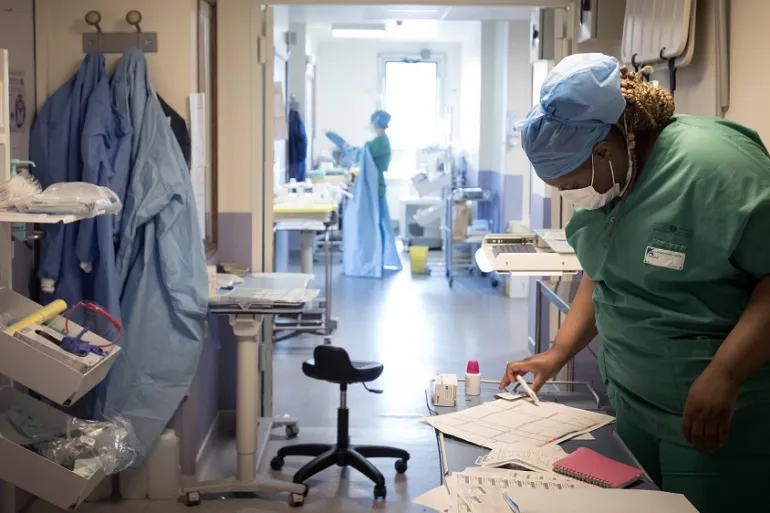The Lure of Laturedrianeuro: What You Need to Know
Laturedrianeuro is an emerging concept that has garnered attention within various fields of study, including biological sciences, metaphysics, and innovative technology. The term itself encapsulates a multi-disciplinary approach, allowing for a broader understanding of its potential implications. Originating from a confluence of neurobiological research and abstract theoretical frameworks, laturedrianeuro represents a novel idea that examines the intricate relationships between neural processes and their influence on behavioral and cognitive outcomes.
Within the current landscape of innovations, laturedrianeuro stands as a significant topic of discussion. Its essence revolves around the neurobiological mechanisms that govern human interactions, learning, and adaptive behaviors. Scholars have posited that this concept has the potential to reshape our understanding of neural dynamics, especially how these mechanisms can facilitate or hinder the dissemination of knowledge and skills in various contexts.
As researchers delve deeper into laturedrianeuro, they are not only deciphering its biological basis but are also considering its theoretical implications. These implications extend to how laturedrianeuro might interact with existing frameworks in psychology and education. By recognizing how neural pathways engage with external stimuli, theorists are exploring avenues for enhancing cognitive development and promoting effective learning environments.
Moreover, the prospects of laturedrianeuro expanding beyond its current boundaries raise intriguing questions. The integration of technological advancements with this concept could potentially lead to innovations in therapeutic practices and educational methodologies. The overarching aim is to understand how laturedrianeuro can contribute to developmental frameworks and enhance dissemination practices across various domains. Such explorations could yield significant insights into human behavioral dynamics and cognitive adaptability.
Mechanisms of Spreading: How Can Laturedrianeuro Transmit?

The dissemination of laturedrianeuro involves a complex interplay of various mechanisms that facilitate its transmission across different contexts. Understanding these mechanisms is crucial for grasping how laturedrianeuro can potentially spread beyond established boundaries. Primarily, biological factors play a significant role in its propagation. For instance, laturedrianeuro may leverage specific receptors or pathways within host organisms, enabling a more efficient transfer between living systems. This biological nuance can significantly impact the extent to which laturedrianeuro can spread, as it must be compatible with the physiological processes of potential hosts.
In addition to biological aspects, technological advancements are reshaping how laturedrianeuro can be transmitted. For example, the use of digital platforms has revolutionized the dissemination of information and resources. By employing sophisticated data-sharing techniques, the reach of laturedrianeuro can be massively amplified, transcending geographical constraints. Social media networks, in particular, serve as powerful vehicles for laturedrianeuro to connect with diverse audiences, thus facilitating a broader understanding and acceptance within various communities.
Social factors also play an indispensable role in the spread of laturedrianeuro. Public perception and societal attitudes toward this concept can significantly influence its acceptance and subsequent dissemination. Case studies from regions where laturedrianeuro was introduced highlight how societal norms and cultural beliefs either bolster or impede its integration into daily life. In environments where there is openness to innovative ideas, laturedrianeuro has shown promising potential for growth. Conversely, resistance or skepticism can significantly hinder its reach, emphasizing the need for awareness initiatives that address misconceptions.
In conclusion, the mechanisms behind how laturedrianeuro can transmit involve a multifaceted approach integrating biological compatibility, technological advancements, and social dynamics. These elements collectively shape its potential for expansion, suggesting that careful consideration of each factor is essential for maximizing its impact in diverse contexts.
Barriers to Spread: Challenges in the Journey of Laturedrianeuro
The journey of laturedrianeuro towards widespread acceptance and application is faced with numerous challenges that can hinder its potential to spread effectively. These challenges can be categorized into scientific, regulatory, and public perception barriers, each playing a significant role in shaping the future of this innovative solution.
From a scientific perspective, the complexity of laturedrianeuro requires rigorous research and validation. There is an ongoing need for empirical data that demonstrates its efficacy and safety, which can be a time-consuming process. Limited funding for research and development can further complicate efforts to advance laturedrianeuro, hindering its ability to cross the threshold into mainstream application. This necessitates collaboration among academic institutions, industry stakeholders, and government entities to foster an environment conducive to scientific breakthroughs.
Regulatory hurdles represent another significant barrier to the spread of laturedrianeuro. The intricate regulatory framework governing the approval and deployment of new technologies often demands exhaustive documentation and compliance with various safety standards. Navigating this landscape can be daunting, requiring expertise and resources that may not be readily available to all innovators. Engaging with regulatory bodies early in the process and advocating for streamlined approval mechanisms can facilitate a smoother path for laturedrianeuro’s acceptance.
Public perception also plays a critical role in the diffusion of innovations like laturedrianeuro. Misunderstandings or fears regarding the new technology may prevent acceptance and adoption among potential users. Effective communication strategies that clarify the benefits and address concerns about laturedrianeuro are essential. Educational campaigns can promote informed discussions, dispelling myths and fostering a sense of trust among the public.
Addressing these barriers requires a multifaceted approach that blends scientific validation, regulatory engagement, and proactive public outreach. By doing so, the potential of laturedrianeuro can be realized, leading to its expanded use across various sectors.
Future Prospects: What Lies Ahead for Laturedrianeuro Spread?
The concept of laturedrianeuro is rapidly evolving, creating a realm of possibilities that stretch the boundaries of traditional frameworks. With ongoing advancements in neurobiology and cognitive sciences, we can anticipate a significant transformation in how laturedrianeuro may spread across diverse domains, including education, healthcare, and technology. These sectors are poised to benefit immensely from a broader understanding of how laturedrianeuro functions and its potential applications.
Currently, research indicates that interdisciplinary collaboration will be crucial in promoting the spread of laturedrianeuro knowledge. Scholars, practitioners, and technologists are coming together to innovate and develop tools capable of fostering laturedrianeuro awareness. For instance, the integration of artificial intelligence in neuroeducational tools could revolutionize how we teach concepts related to laturedrianeuro, making them accessible to a wider audience.
Moreover, recent trends suggest that digital platforms may facilitate virtual communities that disseminate information regarding laturedrianeuro. These online spaces can encourage knowledge-sharing and foster dialogues where individuals can exchange insights and strategies related to its dissemination. Furthermore, as public interest grows, we might anticipate expanded funding for research and application projects focused on laturedrianeuro spread, driving innovation for real-world implementations.
Experts project that the future trajectory of laturedrianeuro spread will also be informed by enhancements in communication technologies, such as augmented and virtual reality. Through these immersive experiences, individuals may grasp complex laturedrianeuro concepts in a more interactive format. Ultimately, as connections deepen between disciplines and technological innovations arise, the potential for laturedrianeuro to spread widely across various sectors looks promising, paving the way for its broader application and impact in the years to come.










